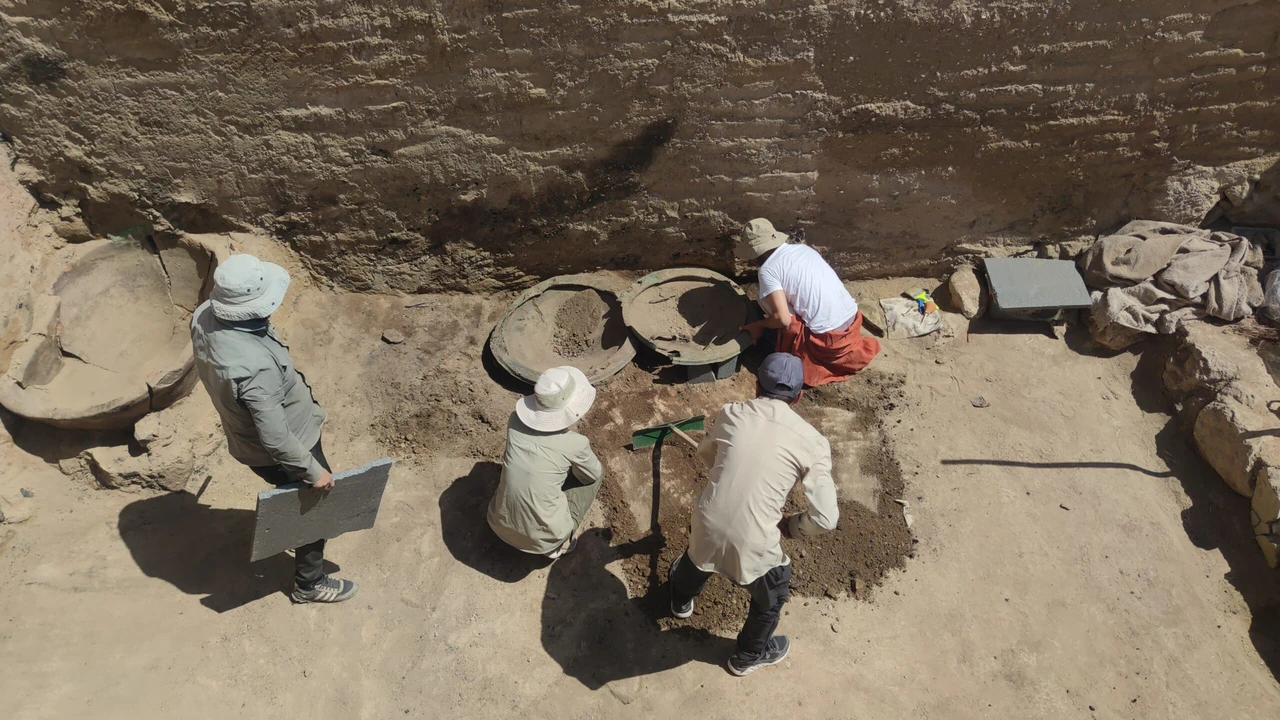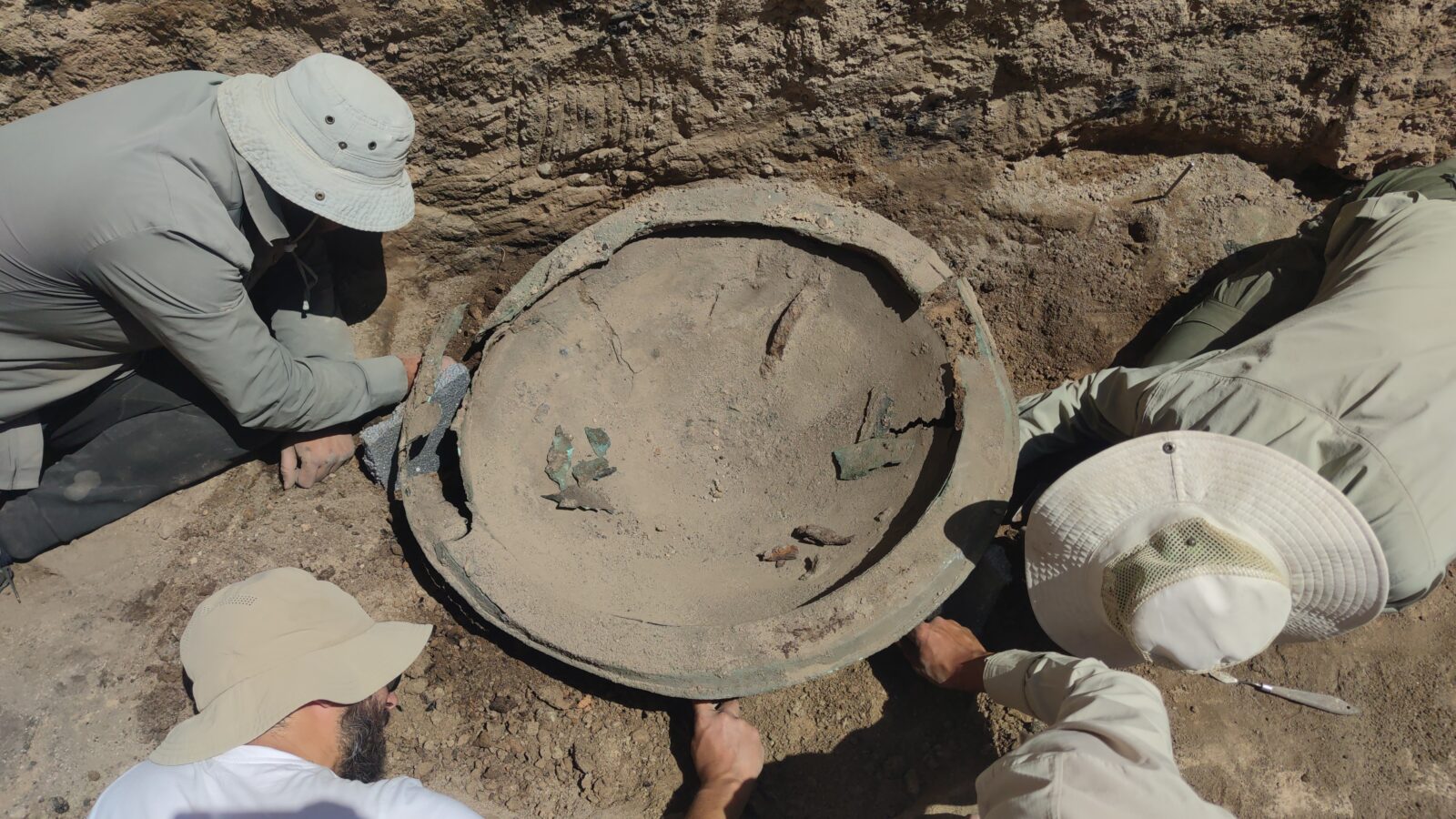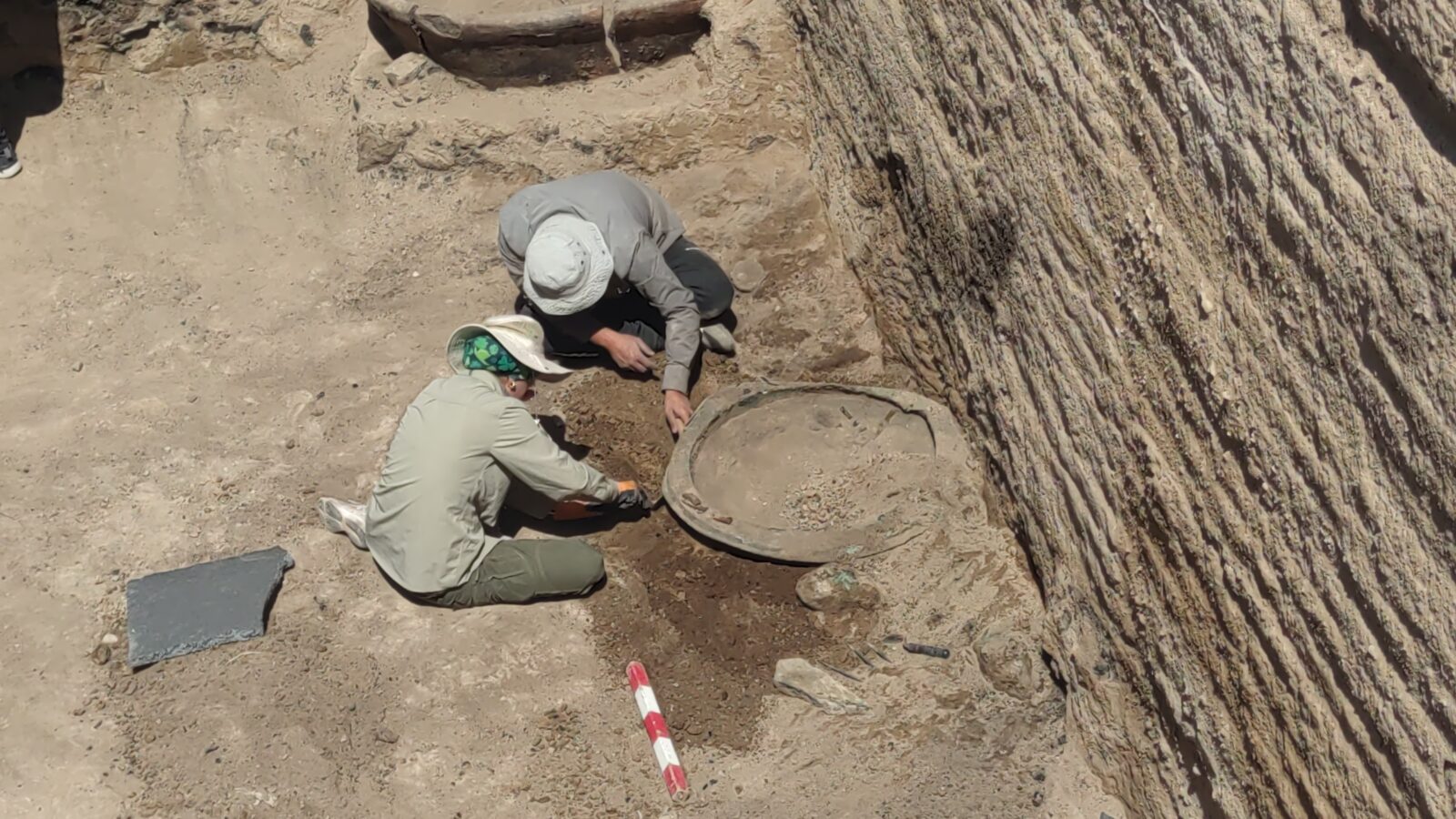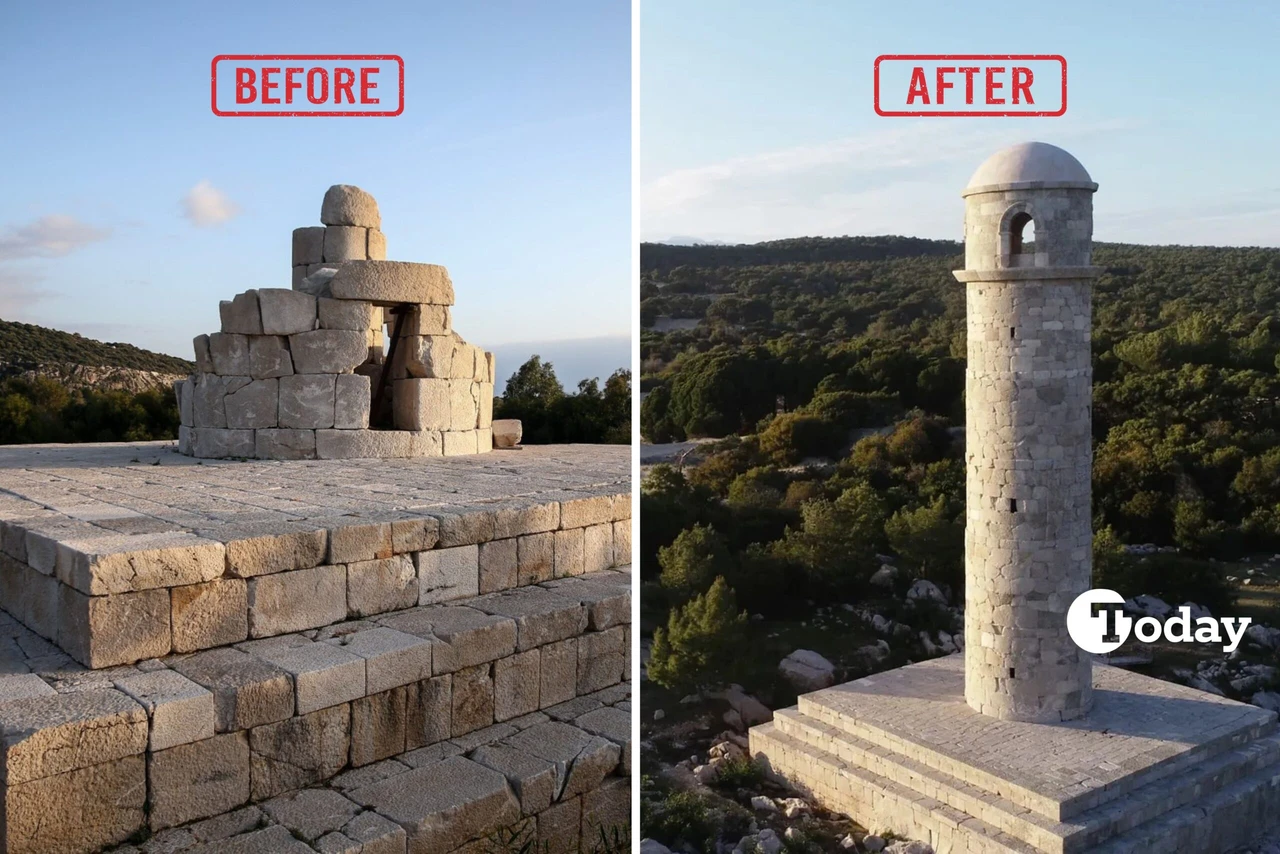2,700-year-old bronze shields, helmet found at Türkiye’s Ayanis Fortress
 In Van, 3 bronze shields and 1 helmet dating back to 2,700 years were found in this year's leg of the excavations carried out for 36 years in Ayanis Fortress built by the Urartians, September 8, 2024 (IHA Photo)
In Van, 3 bronze shields and 1 helmet dating back to 2,700 years were found in this year's leg of the excavations carried out for 36 years in Ayanis Fortress built by the Urartians, September 8, 2024 (IHA Photo)
A stunning discovery has come to light during the ongoing excavations at Ayanis Fortress in Van’s Tusba district.
Three bronze shields and one helmet, estimated to be around 2,700 years old, were unearthed during this year’s archaeological efforts.
The site, constructed by the Urartians, has been under excavation for the past 36 years, with the last decade overseen by professor Mehmet Isikli of Ataturk University.

‘Bronze shields highlight this year’s excavation’
Professor Isikli, who leads the archaeological team, shared insights into the remarkable finds: “This year, we uncovered three bronze shields and one helmet, all in surprisingly good condition. These items were found deep within the fortress, about 6-7 meters below the surface, in a chamber likely untouched by the destruction caused by an ancient earthquake.”
The Ayanis Fortress has yielded a rich collection of bronze artifacts over the years, particularly weapons, making it a key site for understanding Urartian craftsmanship.
The bronze shields discovered this year are believed to be ceremonial in nature, with the helmet adorned with intricate decorations that hint at its royal or religious significance.
“These finds provide strong evidence that the area was used by a royal or religious elite group,” Isikli added.

Urartians: Masters of stone, metal and craftsmanship
Over 30 bronze shields have been found in the fortress to date, emphasizing the Urartians’ exceptional skill in metalworking.
The Urartian civilization, known for its mastery over stone, metal, and bronze, holds a special place in Anatolian history.
“Urartians were unparalleled in their ability to work with metal, producing some of the finest collections of bronze artifacts in the ancient world,” explained Professor Isikli.

The recent finds are attributed to the reign of King Rusa II, whose era saw Ayanis Fortress become a hub of bronze craftsmanship.
These ancient treasures will soon undergo restoration and conservation efforts before being displayed in a local museum, offering a glimpse into a civilization that once thrived in what is now modern-day Türkiye.



